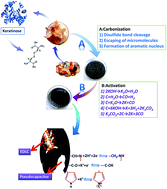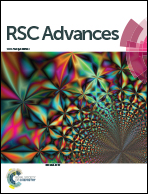High performance N-doped porous activated carbon based on chicken feather for supercapacitors and CO2 capture†
Abstract
A low cost carbon precursor to produce carbon with large specific surface area and abundant heteroatoms is essential for CO2 uptake and supercapacitors to realize economic viability. We report a facile synthesis method and superior performance of a kind of porous activated carbon based on chicken feather. Herein, different activated temperatures and alkali/carbon ratios (KOH vs. carbon in g/g) are used to tailor the pore structure and the surface chemistry, so the samples show a wide range of specific surface area and nitrogen content. The sample activated at 600 °C with the alkali/carbon ratio of 4 is rich in nitrogen and micropores (<1 nm), exhibiting the highest CO2 uptake of 6.5 mmol g−1 and the largest specific capacitance of 351 F g−1 at 0.1 A g−1. Moreover, the sample activated at 800 °C with the alkali/carbon ratio of 5.5 retained 260 F g−1 at 30 A g−1 with a retention rate of 98% after 10 000 cycles (1 A g−1), indicating the excellent retention capability under high current densities and long cycle life.


 Please wait while we load your content...
Please wait while we load your content...